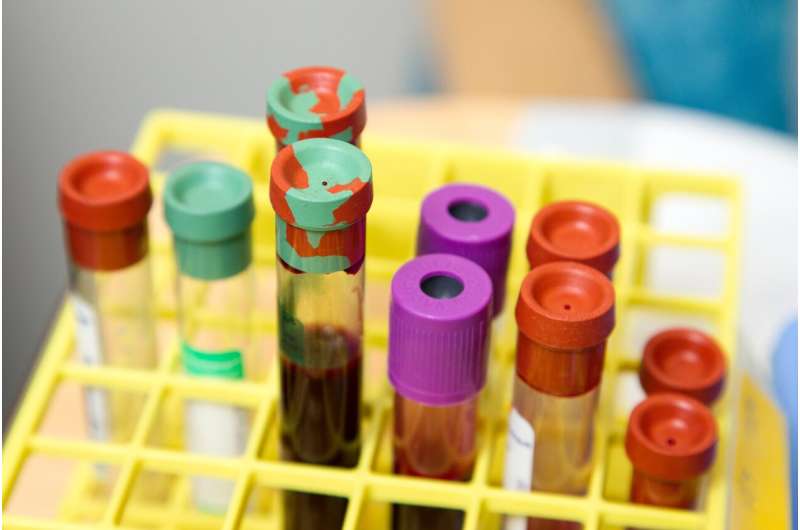Affordable Blood Test Detects Proteins for Early Alzheimer's Diagnosis

A new low-cost blood test developed by USC researchers can detect key proteins associated with early Alzheimer's disease, enabling accessible screening and early intervention strategies.
Researchers from the Keck School of Medicine at USC have developed a cost-effective blood test capable of detecting early signs of Alzheimer's disease by measuring specific proteins associated with the condition. The innovative test, called Penta-Plex Alzheimer's Disease Capture Sandwich Immunoassay (5ADCSI), simultaneously measures five biomarkers, including various forms of amyloid and tau proteins, which are known to accumulate in the brain during Alzheimer's progression. This new approach surpasses traditional blood tests that usually detect fewer biomarkers and rely on specialized, expensive equipment, by utilizing widely accessible xMAP technology often found in many laboratories.
A recent proof-of-concept study published in the Journal of Alzheimer's Disease demonstrated that 5ADCSI effectively distinguishes between healthy individuals, those with mild cognitive impairment, and Alzheimer's patients. The test showed particularly strong correlations with cerebrospinal fluid biomarkers, which are more invasive and costly to obtain, suggesting that blood-based testing could be a reliable early screening tool.
This development is significant because early detection allows for interventions that may delay or prevent cognitive decline. The affordability of 5ADCSI could enable widespread screening programs similar to cholesterol or blood sugar tests, making early diagnosis more accessible. Dr. Ebrahim Zandi emphasized that the test’s simplicity and low cost could facilitate regular screenings in clinics, potentially leading to earlier treatment and lifestyle modifications such as increased exercise.
The test's creation involved selecting key biomarkers linked to Alzheimer's, including Aβ40, Aβ42, phosphorylated tau, neurofilament light chain, and GFAP. Using antibody-coated beads, scientists could detect these proteins in blood samples through fluorescence imaging, allowing precise quantification. The study included 63 blood samples, revealing that Alzheimer’s patients had significantly higher levels of biomarkers, especially p217Tau, a promising indicator of disease.
Moving forward, the researchers aim to validate the test in larger patient populations and incorporate it into clinical practice. The goal is to combine 5ADCSI with genetic testing for APOE4 to provide a comprehensive risk assessment, ultimately facilitating early preventive measures.
This breakthrough signifies a major step toward accessible, early detection of Alzheimer’s, potentially transforming how the disease is diagnosed and managed in the future.
Source: https://medicalxpress.com/news/2025-05-blood-proteins-early-alzheimer.html
Stay Updated with Mia's Feed
Get the latest health & wellness insights delivered straight to your inbox.
Related Articles
Genetic Variant Offers Protection Against Inherited Dementia
A recent study reveals that a common gene variant in TMEM106B may protect against the development and progression of inherited frontotemporal dementia, offering new hope for personalized treatment approaches.
Innovative Blood Test Enhances Liver Disease Management
A new blood test measuring phosphatidylethanol (PEth) offers unprecedented accuracy in detecting alcohol use among liver disease patients, supporting better treatment and transplant decisions.
Infertile Women Face Higher Risk of Heart Disease Following Assisted Reproduction
Women with a history of infertility, especially young women and those who undergo fertility treatments, face a greater risk of developing cardiovascular disease later in life. Ongoing research emphasizes early detection and preventive care.
Gender Disparities in Alzheimer's Progression Among Women with Down Syndrome
New research reveals that women with Down syndrome develop Alzheimer's disease more rapidly and show more advanced brain pathology than men, underscoring the need for sex-specific approaches in research and treatment.



